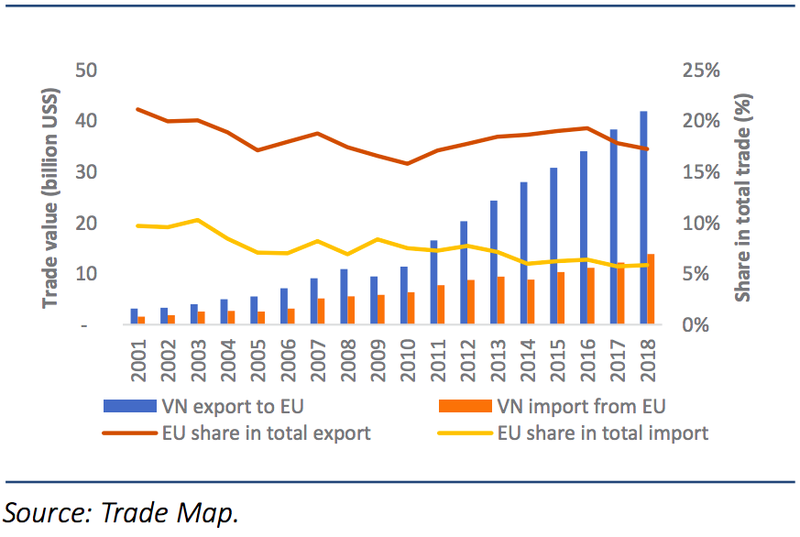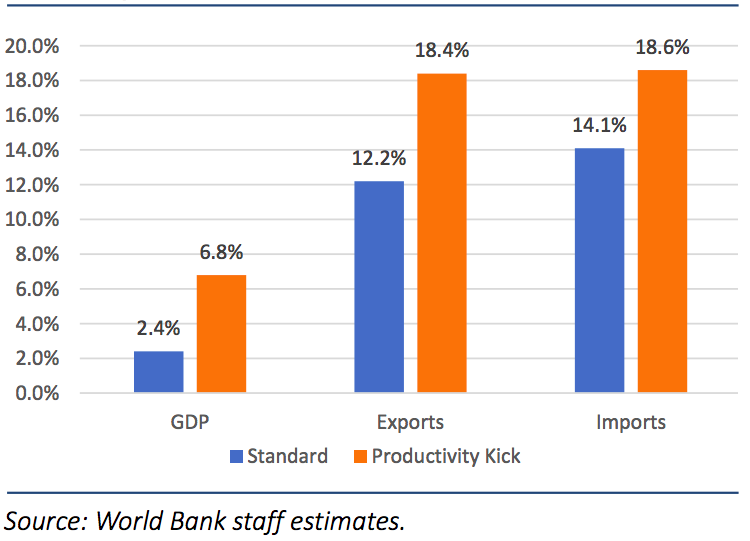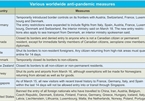Vietnam needs to fill major legal gaps and address key implementation issues to reap the full benefits of the European Union Vietnam Free Trade Agreement (EVFTA), expected to be ratified by Vietnam’s National Assembly in its May meeting, according to a new World Bank report.
 |
| Vietnam–EU: Stable trade relationship. |
The report, “Deepening International Integration and Implementing the EVFTA”, released today, estimates that by simply enjoying the tariff reduction as agreed, EVFTA could boost Vietnam’s GDP and exports by 2.4% and 12% respectively by 2030, while lifting an additional 100,000-800,000 people out of poverty by 2030. Such benefits are particularly urgent to lock in positive economic gains as the country responds to the Covid-19 pandemic.
The report argues that Vietnam could benefit even more from the next-generation trade deals such as EVFTA and Comprehensive and Progressive Agreement for Trans-Pacific Partnership (CPTPP) if they stimulate a comprehensive agenda of economic and institutional reforms to facilitate compliance with non-tariff agreements.
 |
| Macroeconomic impact of the EVFTA on the Vietnamese economy by 2030 (% deviations with respect to baseline). |
The report estimates that such reforms would result in a “productivity kick”, increasing GDP by 6.8%, relative to the baseline scenario, by 2030. The report highlights the need for Vietnam to increase capacity to handle certain key issues, including rules of origin, animal and plant sanitary standards, and investor-state dispute settlement.
“If Vietnam can act in a decisive manner to close legal and implementation capacity gaps, it can capitalize a trade deal whose direct benefits are estimated to be largest in the country’s history,” said Ousmane Dione, World Bank Country Director for Vietnam. “With Covid-19 acting as a reset button and EVFTA as an accelerator, now is the perfect time to embrace deeper domestic reforms.”
The report cites the rules of origin requirement as one of the key challenges for Vietnam to overcome. Even if a product is produced in Vietnam, EU importers might not determine it as such due to the high dependence on imported materials.
The report finds that in key export manufacturing industries, a majority of inputs are sourced from foreign countries (for instance, 62% in electronics and 53% in the automotive sector). It calls for greater efforts to improve linkages between domestic suppliers and foreign enterprises as lead firms in major global value chains.
At the same time, rigorous European food safety standards make it imperative for Vietnam to improve the clarity and consistency of its sanitary measures. By one estimate, the cost of full compliance with existing non-tariff measures in Vietnam will be equivalent to a 16.6% tariff (compared to a regional average of 5.4%).
The introduction of EVFTA is expected to bring more investors into Vietnam both from Europe and from the rest of the world. As the flow of foreign investment increase, so does the number of commercial grievances. The World Bank calls for accelerated development of a Systemic Investment Response Mechanism to settle disputes between investors and the state.
The report also makes the case for prioritizing key sectors that make up the bulk of Vietnamese exports to the European market for Covid-19 economic recovery efforts, to maximize the benefits of the trade deal.
The EU is one of Vietnam’s most important and stable trading partners. Vietnam’s exports to the EU have steadily grown at an average annual rate of 16%, and Vietnam has gained a trade surplus with the EU over the past two decades. Hanoitimes
Ngoc Thuy

Vietnam has high hopes for investments from Europe after EVFTA ratification
Vietnam is looking forward to receiving high-quality investments from Europe once the EU-Vietnam FTA (EVFTA) and the EU-Vietnam Investment Protection Agreement (EVIPA) take effect.

EVFTA remains guiding light in mitigating trade depletion
The European Union entry ban on its wide borders comes in a crucial year for Vietnamese exporters to the EU, leading to the EU-Vietnam Free Trade Agreement to become ever more important for both sides in the year to come.
 The EU-Vietnam trade deal is the largest new-generation free trade agreement in Vietnam’s history in terms of direct benefits." itemprop="description" />
The EU-Vietnam trade deal is the largest new-generation free trade agreement in Vietnam’s history in terms of direct benefits." itemprop="description" />